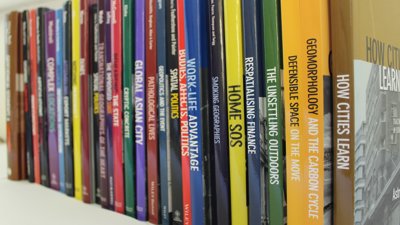By Catherine Souch, Royal Geographical Society (with IBG)
In a rapidly changing technology environment, publishers provide the opportunity to include supplementary materials for most online journals. These can range from animations, to movies, sound or text files, 3D images, interactive maps, or programmes used in analysis. Some research grant funders now mandate that data sets are published alongside articles in data repositories or online data journals.
Supplementary materials provide excellent opportunities to enhance a standard article: to illustrate methods or results in new and creative ways, to include figures and data that otherwise would be excluded because of restrictions of length, and to advance the arguments and interpretations being made and/or to allow multiple levels of interpretation. That said, do not underestimate the amount of time it takes to create such materials, and so before embarking on this route do ensure the supplementary materials you include really are enhancing the article and the key points you wish to make. As a point of caution, be aware that many journals do not provide copyediting services for supplementary materials, so you will need to take particular care in preparing these for publication. Journals will also have specific restrictions on what can be included and the formats in which they need to be submitted, so consult the online guidance and/or contact the editor before submission.
About this guide
Publishing is a crucial, but sometimes daunting and unexplained, part of academic life. All academic geographers are supposed to do it, but there are few formal guidelines about how best it should be done. Many of us discover how to publish by trial and error or through the mentoring and support of colleagues. Publishing and academic landscapes also change, presenting new challenges to established academics. The publishing and getting read guides have four main aims: to provide clear, practical and constructive advice about how to publish research in a wide range of forms; to encourage you to think strategically about your publication profile and plans; to set out some of the opportunities and responsibilities you have as an author; and to support you in getting your published research read.
